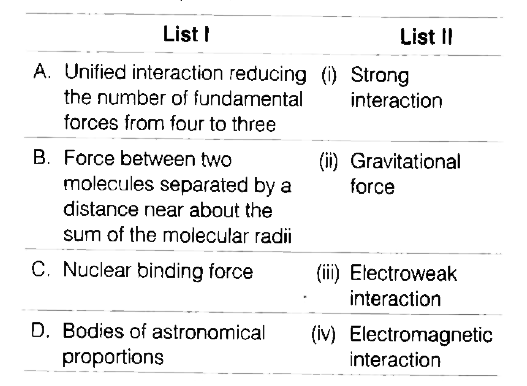The pressure to be applied to the ends of a steel cylinder to keep its length constant upon raising its temperature by 100∘C is (thermal expansion coefficient, α=11×10−6/K, Young's modulus = 200 GPa)Solution in Telugu
0.22×109Pa
5.5×10−6Pa
0.22 Pa
55Pa
The correct Answer is:A
Pressure= Thermal stress
= Young.s modulus × Thermal strain
=YαΔT
=200×109×11×10−6×100
=22×107=0.22×109Pa
Topper's Solved these Questions
Similar Questions
If A represents density, B represents velocity, C represents specific heat capacity and D represents wavelength, then the quantity having the dimensions of product of A, B, C and D is
03:10View SolutionMatch the entries in List I with those in List II.
 03:35View Solution
03:35View SolutionThe pressure that has to be applied to the ends of a steel wire of length 10cm to keep its length constant when its temperature is raised by 100^@C is : (For steel Young's modulus is 2xx10^11 Nm^-2 and coefficient of thermal expansion is 1.1xx10^-5K^_1 )
03:19View SolutionWhat pressure has to be applied to the ends of a steel cylinder to keep its length constant on raising its temperature by 100.∘C ?
01:25View SolutionThe Young’s modulus of steel is 2×1011N/m2 and its coefficient of linear expansion is 1.1×10–5 per deg. The pressure to be applied to the ends of a steel cylinder to keep its length constant on raising its temperature by 100∘C, will be -
02:58View SolutionA metal rod of Young's modules Y and coefficient of thermal expansion alpha is held at its two ends such that its length remains constant. If its temperature is raised by t^(@)C , the linear stress developed in it is
03:37View SolutionThe temperature of a steel rod is increased by 15^(@)C .To resist its expansion in length, what stress should be applied? Young's modulus (Y) for steel =2 times 10^(12)dyn*cm^(-2) and its coefficient of linear expansion, alpha=1.2 times 10^(-5@)C^(-1) .
View SolutionThe pressure that has to be applied to the ends of a steel wire of length 10 cm to keep its length constant when its temperature is raised by 100∘C is (For steel, Young's modulus is 2×1011N⋅m−2 and coefficient of linear expansion is 1.1×10−5K−1)
View SolutionA metal rod of Young's modulus Y and coefficient of thermal expansion a is held at its two ends such that its length remains invariant. If its temperature is raised by t^(@)C , the linear stress developed in it is:
View SolutionThe pressure that has to be applied to the ends of a steel wire of length 10 cm to keep its length constant when its temperature is raised by 100^(@)C is : (For steel Young's modulus is 2 xx 10^(11) N m^(2) and coefficient of themal expansion is 1.1 xx 10^(-5)K^(-1))
02:40View Solutionএকটি স্টিলের তারের দৈর্ঘ্য 10 cm । এর উষ্ণতা বৃদ্ধি করে যখন 100°C করা হল তখন তারটির দৈর্ঘ্য ধ্রুবক রাখতে তারটির প্রান্তে প্রযুক্ত চাপ হবে (স্টিলের ক্ষেত্রে, ইয়ং গুণাঙ্ক =2×1011N.m−2এবং রৈখিক প্রসারণ গুণাঙ্ক =1.1×10−5K−1)
01:31View SolutionA metal rod of Young's modulus and coefficient of thermal expansion alpha is held at its two ends such that its length remains invariant. If its temperature is raised by t^(@)C, the linear stress developed it its is .....
View SolutionThe pressure that has to be applied to the ends of a steel wire of length 10cm to keep its length constant when its temperature is raised by 100^@C is : (For steel Young's modulus is 2xx10^11 Nm^-2 and coefficient of thermal expansion is 1.1xx10^-5K^_1 )
View SolutionA metal rod of young's modulus Y and coefficient of thermal expansion alpha is held at its two ends such that its length remains invariant. If its temperature is raised by i.e, the linear stress developed in it is
05:22View SolutionA metal rod of young's modulus Y and coefficient of thermal expansion alpha is held at its two ends such that its length remains invariant. If its temperature is raised by i.e, the linear stress developed in it is
03:21View Solution

